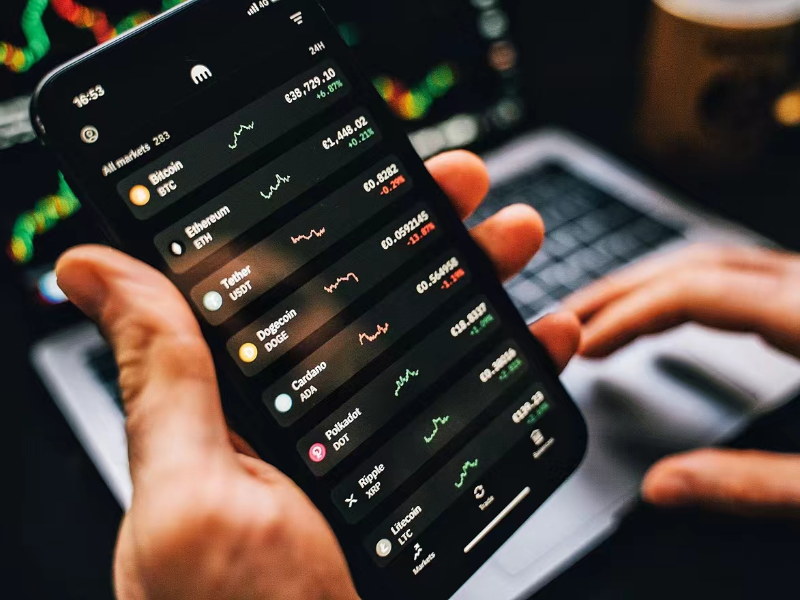- Technical security is an important foundation for cryptocurrency exchanges to secure user funds and data. Modern exchanges use technical measures such as multi-signature technology and cold wallet storage to protect the system and user assets.
- Through effective authentication, exchanges can ensure that only legitimate users can conduct trading activities, preventing unauthorised access and fraud.
- By accepting third-party security audits and complying with regulatory requirements, providing timely and effective customer support services and establishing a sound risk management system, the Exchange can ensure system security and compliance, help users resolve security issues and risk events, and protect users’ funds and transaction security.
Cryptocurrency exchanges are online platforms that allow users to buy and sell various cryptocurrencies, such as bitcoin and ether. These exchanges offer the conversion of digital currencies into fiat currencies such as dollars, euros or other cryptocurrencies. The increasing value of digital assets with each passing day has attracted the attention of hackers and cybercriminals, and the security of cryptocurrency exchanges has become a major concern for investors and traders.
Also read: Hong Kong emerges as global crypto safe haven and gateway
Technical security
Multi-signature technology is an important security measure for cryptocurrency exchanges. It requires the signature confirmation of multiple private keys to execute a transaction, rather than relying solely on a single private key.
This design greatly enhances the security of the transaction so that even if one private key is compromised or hacked, the transaction cannot be completed. Bitfinex, for example, uses multi-signature technology to protect users’ assets.
Cold wallet refers to storing most of the cryptocurrency funds in an offline device isolated from the internet, rather than in a hot wallet connected to the network.
Even if an exchange’s hot wallet is hacked, the hacker will not be able to access the majority of user funds. Coinbase employs cold wallet storage to protect users’ digital assets and ensure security.
Real-time monitoring can detect and respond to potential security threats and abnormal behaviours promptly, while firewalls can block unauthorised access and cyber-attacks.
Binance has established a strong real-time monitoring system and firewall to protect the security of user transactions.
The use of SSL (security socketlayer) encryption protocols and other encryption technologies can ensure the security of data during transmission. KuCoin exchange has adopted advanced encryption technologies to protect the security of users’ data.
Regular vulnerability scanning and fixing is a critical step in ensuring the security of an exchange, and Gemini exchange is actively working on fixing and updating vulnerabilities to ensure the security and stability of the system.
Also read: What is the overall cryptocurrency market cap?
User authentication
Two-step verification is a common authentication method that enhances account security by requiring users to provide additional authentication information, such as a mobile phone verification code or a hardware security key when logging in.
This approach can effectively prevent hacking and account theft. Taking Kraken as an example, the exchange supports a two-step authentication function, which users can enable in the settings to improve the security of their accounts.
Real-name authentication is another important method of user authentication, which ensures the legitimacy and transparency of trading activities by verifying the user’s identity information and trading qualifications.
OKX requires users to complete KYC (know your customer) authentication and submit identification documents and related information for verification to ensure account security and compliance.
IP whitelisting is an effective way to authenticate users. Exchanges can configure IP whitelisting to only allow logins and transactions from IP addresses within the whitelist, preventing unauthorised access and malicious attacks.
Huobi supports the IP whitelist function, users can configure the whitelist in the settings to improve the security of their accounts.
The KYC process is a common method of user authentication, whereby exchanges need to collect and verify users’ identity documents and related information to meet regulatory requirements and prevent money laundering activities. Bitstamp requires users to complete KYC verification before making transactions to ensure account security and compliance.

Security audit and regulation
Third-party security audits are a common security measure, and exchanges are required to regularly undergo comprehensive audits of their systems by professional security auditors to identify potential security vulnerabilities and risks.
Regulatory compliance is an important means of safeguarding the security of cryptocurrency exchanges, which need to comply with local laws, regulations and regulatory requirements to ensure the legality and transparency of trading activities.
Some large exchanges, such as Bitfinex, are regulated by several countries, including the U.S. and the European Union, and are subject to regular supervision and audits by regulators to protect user funds and data security.
Exchanges are required to develop and implement strict security measures to protect user funds and data from hacking and illegal activities. Binance has established a comprehensive security system, including multi-signature technology, cold wallet storage and real-time monitoring, to ensure the security and stability of the exchange.
Customer service and risk management
Customer support is one of the important responsibilities of cryptocurrency exchanges, and exchanges need to establish a sound customer support system to respond to users’ enquiries and complaints promptly and solve security problems and risk events.
For example, Coinbase provides 24/7 customer support services, users can contact the customer service team through multiple channels, such as online chat, email and phone, to get timely help and support.
Risk management is an important means for cryptocurrency exchanges to ensure security. Exchanges need to establish a sound risk management system, identify and assess transaction risks, and take effective risk control measures to protect user funds and transaction security.
BitMEX has a professional risk management team that regularly evaluates transaction risks and takes corresponding measures to guarantee the security and stability of the exchange.
Cryptocurrency exchanges need to establish a perfect incident response mechanism to detect and handle security incidents promptly and reduce user losses. For example, OKEx, with its professional security team and incident response team, can quickly respond to security incidents and take necessary measures to safeguard user funds and transaction security.
Cryptocurrency exchanges need to provide relevant risk education and training to help users understand the risks and challenges of the digital asset market and learn to invest and trade wisely.
Binance provides a wealth of risk education resources, including trading guides, risk tips and online courses, to help users raise their risk awareness and protect their assets.

